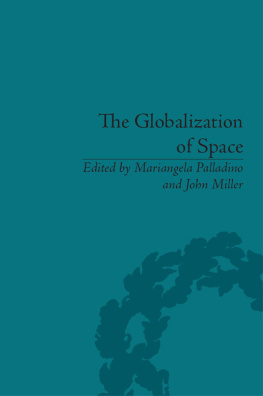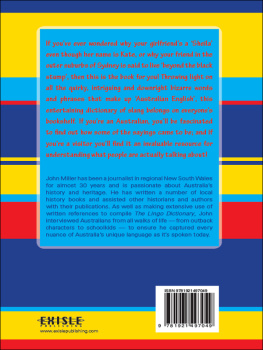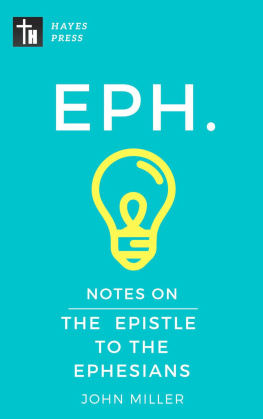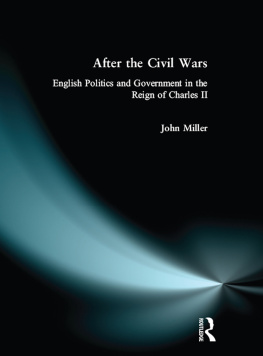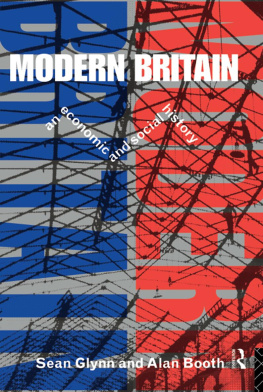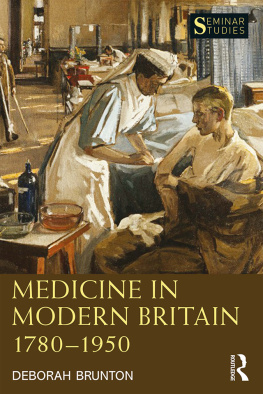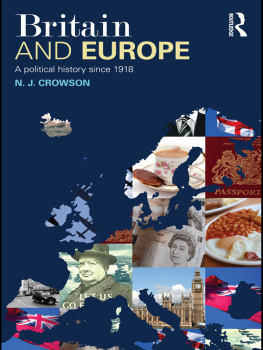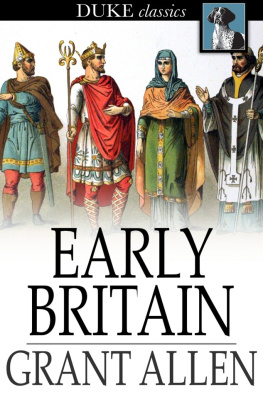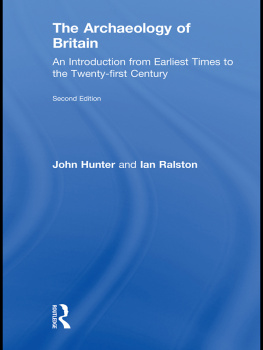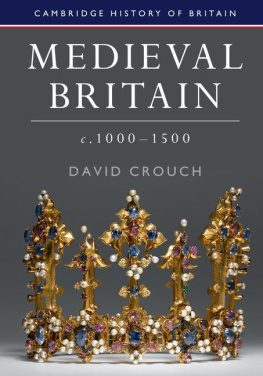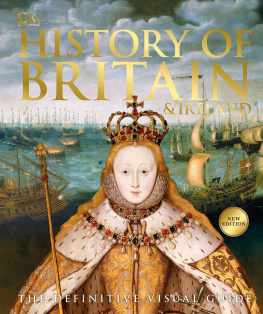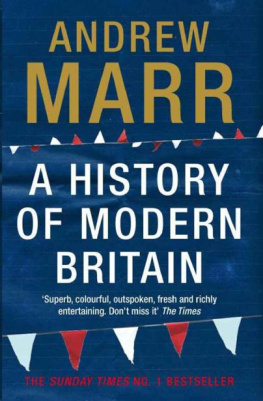Early Modern Britain, 14501750
This introductory textbook provides a wide-ranging survey of the political, social, cultural and economic history of early modern Britain, charting the gradual integration of the four kingdoms, from the Wars of the Roses to the formation of Britain, and the aftermath of Englands unions with Wales and Scotland. The only textbook at this level to cover Britain and Ireland in depth over three centuries, it offers a fully integrated British perspective, with detailed attention given to social change throughout all chapters. Featuring source textboxes, illustrations, highlighted key terms and accompanying glossary, timelines, students questions, and annotated further reading suggestions, including key websites and links, this textbook will be an essential resource for undergraduate courses on the history of early modern Britain. A companion website includes additional primary sources and bibliographic resources.
John Miller is Emeritus Professor of History at Queen Mary, University of London. His most recent books include After the Civil Wars (2000) and Cities Divided: Politics and Religion in English Provincial Towns 16601722 (2007).
Cambridge History of Britain
The Cambridge History of Britain is an innovative new textbook series covering the whole of British history from the breakdown of Roman power to the present day. The series is aimed at first-year undergraduates and above and volumes in the series will serve both as indispensable works of synthesis and as original interpretations of Britains past. Each volume will offer an accessible survey of political, social, cultural and economic history, charting the changing shape of Britain as a result of the gradual integration of the four kingdoms and Britains increasing interaction and exchange with Europe and the wider world. Each volume will also feature boxes, illustrations, maps, timelines and guides to further reading as well as a companion website with further primary source and illustrative materials.
Volumes in the Series
I Early Medieval Britain
II Medieval Britain, c.10001500
III Early Modern Britain, 14501750
IV Modern Britain, 1750 to the Present
Cambridge History of Britain
Early Modern Britain 14501750
John Miller
Queen Mary, University of London

University Printing House, Cambridge CB2 8BS, United Kingdom
Cambridge University Press is part of the University of Cambridge.
It furthers the Universitys mission by disseminating knowledge in the pursuit of education, learning and research at the highest international levels of excellence.
www.cambridge.org
Information on this title: www.cambridge.org/9781107650138
John Miller 2017
This publication is in copyright. Subject to statutory exception and to the provisions of relevant collective licensing agreements, no reproduction of any part may take place without the written permission of Cambridge University Press.
First published 2017
Printed in the United Kingdom by TJ International Ltd. Padstow Cornwall
A catalogue record for this publication is available from the British Library
Library of Congress Cataloging-in-Publication data
Names: Miller, John, 1946 July 5 author.
Title: Early modern Britain : 14501750 / John Miller (Queen Mary,
University of London).
Description: Cambridge, United Kingdom; : Cambridge University Press, 2017. |
Series: Cambridge history of Britain; 3
Identifiers: LCCN 2016041646| isbn 9781107015111 (hardback) |
ISBN 9781107650138 (paperback)
Subjects: LCSH: Great Britain History House of York, 14611485. |
Great Britain History Tudors, 14851603. | Great Britain History Stuarts,
16031714. | Great Britain History 17141837. | BISAC: HISTORY /
Europe / Great Britain.
Classification: LCC DA300 .M55 2017 | DDC 941.04/4dc23
LC record available at https://lccn.loc.gov/2016041646
ISBN 978-1-107-01511-1 Hardback
ISBN 978-1-107-65013-8 Paperback
Additional resources for this publication at www.cambridge.org/CHOB-miller
Cambridge University Press has no responsibility for the persistence or accuracy of URLs for external or third-party internet websites referred to in this publication, and does not guarantee that any content on such websites is, or will remain, accurate or appropriate.
Contents
Figures
Tables
Maps
Boxes
Preface
The early modern period in Britain and Ireland does not have an immediately recognisable identity. There were substantial differences of language, society and culture between England, Scotland, Ireland and Wales. Whereas the medieval period can be described as feudal and the nineteenth century as industrial, there is no obvious label for the period in between. One can think of a typical late medieval English nobleman say, Warwick the Kingmaker and a typical early eighteenth-century Whig grandee the Duke of Newcastle but not a typical seventeenth-century peer. Late medieval noblemen mostly lived in fortified castles the last, Kenilworth, was built early in Elizabeths reign; eighteenth-century plutocrats built great unfortified country houses, like William Conollys Palladian palace at Castletown. The early modern period was clearly an age of transition; the aim of this book is to analyse the nature and causes of that transition, an aspiration which may tempt the historian to treat the period as one of modernisation. Modernisation implies progress; both terms imply a movement from the primitive to the modern and, as such, a good thing.
The search for the modern and modernity is in many ways a variation on the old theme of the Whig interpretation of history. As the victors in the partisan struggles of the late seventeenth and early eighteenth centuries, Whig historians depicted the triumph of Whig values as both desirable and inevitable. The nineteenth-century British constitution was (they said) based on religious liberty, parliamentary monarchy and the rule of law, which allowed for change without the bloodshed and upheaval experienced by less fortunate nations (like the French). God had guided the English to throw off the yoke of the Catholic Church and read and interpret the Bible for themselves. The Tudors tamed the nobility, opening the way for the rise of the gentry and ultimately the middle class. Within Parliament the House of Commons became increasingly assertive, demanding freedom of speech and using its power to grant taxation to extort concessions from the Crown. Charles Is refusal to recognise this shift of power led inevitably to the civil wars, after which the monarchy was only a shadow of its former self, like the French monarchy, restored in 1815 in the baggage train of the Allies. The way was open to the glories of the Victorian constitution.
The narrative is a familiar one but it is riddled with problems. First, between the sixteenth and nineteenth centuries it changes from an English to a British narrative, implying English dominance over Scotland and Ireland. But the only time the English fully conquered the other two kingdoms was in the 1650s. Scotland was joined to England in 1707 by a treaty which many, perhaps most, Scots came to see as advantageous. The Irish Parliament became notably more assertive from the 1690s and the Union of 1800 created an intractable problem for the British government for more than a century afterwards. Second, Protestants talked loudly of liberty, by which they meant the liberty to impose their understanding of religious truth not only on Catholics but also on misguided Protestants. Third, far from being generally welcomed, Protestantism had to be forced on the English people, many of whom cherished those elements of the Prayer Book which raised echoes of the Catholic past. Fourth, the Tudors tamed the nobility in the sense of destroying their capacity for autonomous military action, but the nobility (like so many European nobilities) changed from a territorial to a service nobility, dominating the government and the upper ranks of the army under the Georges. Nobility and gentry were never separate classes but formed different strata within a single landed elite. New nobles were recruited (mostly) from among the gentry; the younger sons of the peerage fell back into the gentry. As for the middle class, its most successful members were always rising. Merchants and bankers in the eighteenth century and industrialists in the nineteenth bought land and built country houses. Peers continued to play a major role in county government until the creation of county councils in the 1880s and peers continued to serve as prime ministers into the twentieth century.


